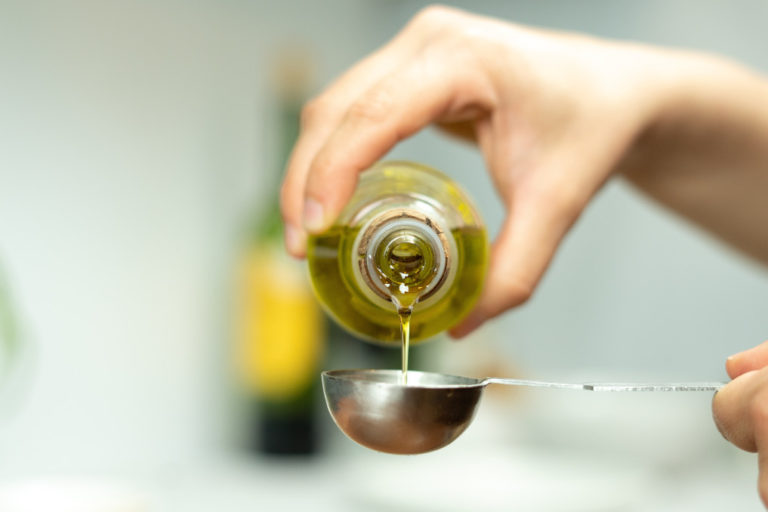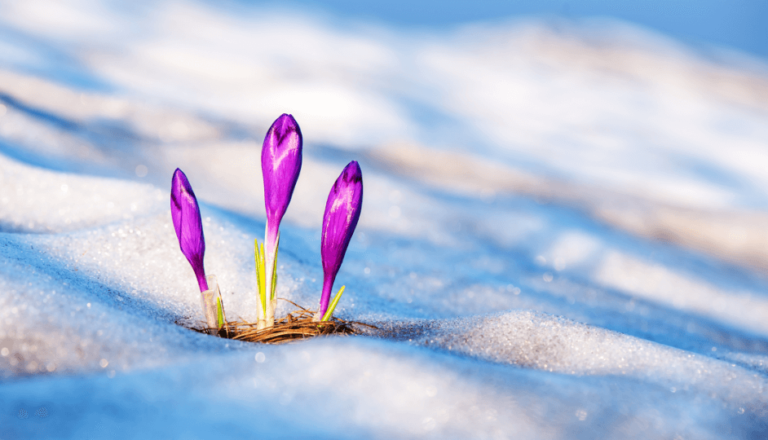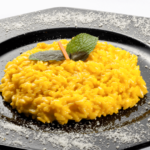If you want to add colour, spice, and a pinch of exotic to food, saffron is the way to go. A little does go a long way so it’s easy to find yourself with the same stash for months or years.
So, this begs the question: does saffron go bad? Can you freeze it? Read on—we explore everything you need to know from shelf life to storage best practices.
Does Saffron go bad?
Saffron does not go bad but like other spices, it does have a shelf life and will lose its potent flavour and aroma as it ages and if it is not stored properly.
Direct light, heat, moisture, and oxygen are the enemies of this precious spice. A little exposure and your saffron will lose its peak freshness very fast.
Whether you have saffron threads or the ground type, it is best to use up your spice before the sell-by date. You also want to adhere to the correct storage recommendation to get the most from the spice.
We’ll talk about storage in a bit but first, let’s take a look at the shelf life of saffron.
How Long Does Saffron Last?
How long saffron lasts depends on storage, the quality of the spice, and whether it is ground or whole.
Let’s start with quality. High-quality saffron is dried at high temperatures to remove as much moisture content as possible. Saffron with slightly more moisture in it is prone to developing mould and bacteria and losing its potency.
Obviously, information about moisture content is not on the label when you buy your spices but try buying your saffron from trusted vendors of high-quality spices.
Other than that, whole saffron will last and retain its flavour and aroma much longer than the ground variety. Lastly, saffron is vulnerable to moisture, heat, light, and oxygen. Storing away from these elements will prolong the life of your spices.
Stored in optimal conditions, saffron threads will last 2-3 years past the sell-by date. This period will reduce to 6-12 months if the saffron is ground. Note that the harvest date is not necessarily the same as the purchase date.
Saffron that goes past the recommended use-by date should still be safe to use as long as it does not have signs of spoilage. However, expect your spice to lose its flavour and aroma the longer you keep it.
Here’s a neat summary of the shelf life of saffron
Saffron Shelf Life
| Pantry | Freezer | |
| Saffron threads (whole saffron) | 2-3 years | 1-2 years |
| Ground saffron | 6-12 months |
4 Tips To Tell If Saffron Has Gone Bad
Saffron has such a distinct flavour, colour, and aroma that telling whether your treasure spice has gone off is not so difficult.
Here’s what to do to check if saffron is still in good shape or if its time to toss it out:
1. Keep An Eye On The Sell-By Date
This date will give you an idea of how fresh your spice is. If the recommended sell-by date is 3 years ago, your saffron has very likely lost its potency and it is best to cut your losses and discard it.
In some circles, it is suggested that you look at the harvest date of saffron threads to evaluate their freshness. Some manufacturers do include this date and the closer your saffron is to this date, the better. Too far away from the harvest date and your spice has probably lost much of its freshness.
2. Check The Color
Saffron has an attractive bright orange-red colour. Aside from its earthy undertones, the vibrant colour is what makes it such an attractive spice.
Whether ground or whole, if your saffron spice has lost its signature colour, looks faded or dull, it is no longer fresh. The spice might not give your recipe the desired flavour or colour.
3. Smell The Aroma
The aroma of fresh saffron is hard to miss. This prized spice comes with undertones of tobacco and a bold floral and earthy aroma.
A great way to test saffron for freshness is to check for the presence of this distinct aroma. Rub a small amount of the space between your thumb and index finger to bring out the aroma.
If there is no smell to speak of or the aroma is dull at most, your spice has probably stayed too long and lost its potency.
4. Look Out For Signs Of Moisture
Ground saffron is particularly prone to moisture contamination. If moisture has invaded your spice, the saffron powder will look clumpy while the threads will stick together instead of existing as individual pieces.
Moist saffron is likely to breed mould, making the spice both unpleasant and unsafe to consume.
5 Tips To Store Saffron
You do not require any expensive containers or complicated methods to store saffron. But, you need to be careful about the storage conditions and choose the right spot in order to get the most from your spice.
Here are our recommendations for storing saffron:
1. Avoid The Refrigerator
Storing saffron in the refrigerator is a big no-no. This might seem like the straightforward way to keep your spices fresh but it is actually the surest way to ruin that expensive stash of saffron.
The fridge has plenty of moisture and saffron will quickly wilt or develop mould if it absorbs the smallest amount of moisture.
2. Choose The Pantry Or Cabinet
The best spot to store saffron is in a cool, clean, and dry cupboard or pantry area. In the stores, saffron is stored in clear jars but this exposes the spice to light and affects its quality.
To retain the flavour and aroma of this spice, store in an airtight container, wrap with foil to protect against light, and place in a dark area away from heat.
3. Keep An Eye On The Temperatures
Saffron is so sensitive that any variations in heat or moisture can easily alter the profile of the spice. Try storing your spice at a temperature of 15-20oC while keeping humidity levels at about 40%. All the better if you have a climate-controlled pantry to extend the shelf life of saffron and other spices.
4. Store In Smaller Portions
If you have a large supply of saffron, divide and store it in smaller containers. This way, you only need to open and use the portion you need instead of exposing the entire stash of spices to air and humidity every time you need a few threads.
This small but important move will keep you from throwing away a whole container of pricey saffron that has gone flat due to exposure to air and moisture.
Other tips to keep in mind:
- Buy whole saffron threads and grind when you need the powder form of the spice. Saffron threads have a significantly longer shelf life in terms of the desired aroma and flavor.
- Buy quality saffron from a reputable vendor who will not mix the spice with additives such as turmeric.
- Avoid holding the container of saffron over a steaming pot or pan as the moisture from the food will get into the container and easily ruin your spice.
The Risks Of Consuming Expired Saffron
When we talk about ‘expired’ saffron what we really mean here is that the spice has gone past the use-by date on the label.
You can use saffron that is well past its sell-by date without worrying about getting sick. As long as the spice was stored properly and shows no signs of spoilage, you can safely consume it.
The only ‘risk’ that comes from expired saffron is that it will lack its potent colour, aroma, and flavour and will not do its intended job, leaving you with a dish that’s meh at most.
Summary
Good quality saffron is not cheap so you want to hold on to your supply for as long as possible. Stored in the right conditions, the spice will serve you for a few years.
But like all spices, saffron will lose its freshness with time so you are better off using it up as fast as possible to enjoy its signature flavour and aroma.









